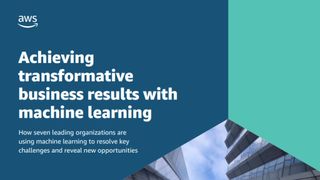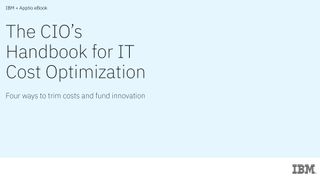What GreenLake for Large Language Models says about HPE's strategy

HPE’s GreenLake for Large Language Models (LLMs) announcement brings together a lot of threads that the company has been collecting over the past few years.
First of all, it should come as no surprise to anyone at all that this comes under the GreenLake banner. CEO Antonio Neri said in 2021 that GreenLake is the future of HPE and clearly he meant it – the company does both indirect and direct sales that aren’t offered on a consumption-based model, but you would be forgiven for thinking otherwise.
It also brings together a lot of acquisitions and partnerships into a single, zeitgeist-capturing offering. It’s also always good to see an acquisition being put to good use, rather than left to languish and this is especially true when we’re talking about such a venerable brand as Cray.
Reminiscences aside, let’s have a look at the meat of this.
While Justin Hotard, executive vice president and general manager for HPC and AI at HPE, mentioned generative AI three times during the press briefing, this isn’t a generative AI product. That’s not a problem, by any means, but it’s telling that it was mentioned up front: DALL-E, Chat GPT, Midjourney, Bard, et al are all seen almost as magic and it seems organizations want a bit of that sparkle to rub off on their AI offering, even if that’s not quite what’s actually for sale. Even those of us who think supercomputers and what they can do is all really rather cool sadly have to acknowledge that most other people in the world – including most people with control over the purse strings – do not feel the same way.

Achieving transformative business results with machine learning
How seven leading organizations are using machine learning to resolve key challenges and reveal new opportunities
Nor is this HPE’s first AI offering: GreenLake for Machine Learning, Swarm Learning, and Machine Learning Development System, to name just three, have all been available for a year or more. There’s even Champallion, the AI-based supercomputer joint developed by HPE and Nvidia in 2022.
Nevertheless, it’s an interesting proposition. The fact it’s only currently available as a private cloud offering, specifically an off-premises offering, is intriguing from the point of view of how HPE has typically positioned GreenLake products. There’s not so much as a whiff of the word “hybrid” about these. As for why this is the case, my guess is that it’s largely, if not entirely, to do with the hardware. As Hotard said, HPC infrastructure has different requirements to even the most powerful servers you may find in a normal data center.
Get the ITPro. daily newsletter
Receive our latest news, industry updates, featured resources and more. Sign up today to receive our FREE report on AI cyber crime & security - newly updated for 2024.
The data sovereignty aspect is also worth paying attention to. Multiple organizations have got ahead of themselves embracing publicly available generative AI platforms in particular, only to discover they had accidentally handed over the keys to the corporate kingdom in the process.
Overall, it’s an intriguing proposition and it will be interesting to see how uptake and rollout goes both immediately and in the longer term. AI isn’t a flash in the pan, but the hype surrounding it at the moment is stifling – let’s see if this has sticking power once the froth has dissipated.

Jane McCallion is ITPro's Managing Editor, specializing in data centers and enterprise IT infrastructure. Before becoming Managing Editor, she held the role of Deputy Editor and, prior to that, Features Editor, managing a pool of freelance and internal writers, while continuing to specialise in enterprise IT infrastructure, and business strategy.
Prior to joining ITPro, Jane was a freelance business journalist writing as both Jane McCallion and Jane Bordenave for titles such as European CEO, World Finance, and Business Excellence Magazine.



